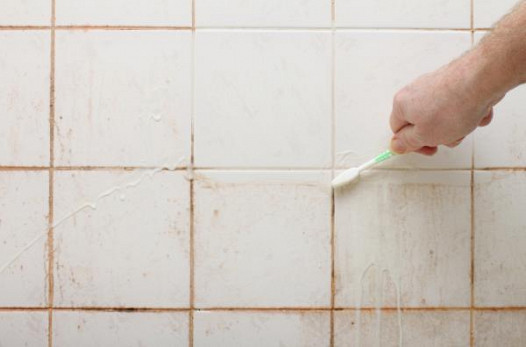Ways to Repair a Water-Damaged Wall in the Bathroom
Ways to Repair a Water-Damaged Wall in the Bathroom
Blog Article
What're your ideas on Preventing Water Damage in the Bathroom?

The restroom is very susceptible for damp accumulation as well as prospective water damage due to the frequent use of water in it. This article uses easy assessment strategies to help finding water damages hazards.
The frequent use of water in the shower room makes it very at risk for damp buildup and potential water damages. By evaluating it regularly, you can reduce water related damages.
The following set of inspections is easy to perform and should be done once in every three months in order to keep your washroom in good shape and to prevent potential water damages caused by the bathtub, the shower, pipeline joints and also plumbing, sinks, closets, and also the bathroom
Do not overlook performing these inspections and be thorough while executing them. Bear in mind that these easy inspections can conserve you a great deal of cash by supplying early indications for water damages
Bath tub as well as Shower
The shower as well as bathtub call for unique interest and maintenance. Examine the ceramic tiles as well as replace if fractured. Make certain that there is no missing cement in between the ceramic tiles. Inspect and also change broken caulking at joints where the walls fulfill the floor or the bathtub. Obstructed drains pipes and pipelines issues will prevent the bath tub from drying and might suggest serious troubles below the bathtub. Talk to an expert immediately to stop structural damages. Focus on discolorations or soft locations around the tub wall surfaces as they may indicate an interior leak.
Plumbing
Signs for water damages are hard to identify considering that most pipelines are installed inside the wall surfaces.
Pay special focus to flooring and also walls dampness as well as discolorations as they may show an unnoticeable plumbing trouble. Inspect dampness levels in adjacent spaces too.
Sinks and also Cabinets
Sinks as well as closets are exposed to dampness and moisture daily as well as are often neglected. Evaluate routinely under the sink and also on the countertop above it. Fix any drip in the catch as it might suggest drainpipe problems. Take a look around the sink, slow-moving draining pipes might show a blocked drainpipe. Change sink seals if they are broken or loosened.
The Commode
The toilet is a prone water joint. Check the water lines as well as look for leaks around the bathroom seat, in the pipe, and under the water tank. If you find any kind of indicators of moisture on the floor around the toilet, check for leaks in the toilet edge and also container seals.
Realize that hanging toilet bowl deodorants enhances the possibilities for blockages.
Water Damage Signs In The Bathroom To Avoid Cleanup
Musty smell
This is one of the easiest signs to catch because musty smells are so odorous. The damp, earthy, moldy smell should be a big red flag. The smell will develop when moisture gets trapped in surfaces, and begins to facilitate mold growth. Leaking pipes under cabinets, inside walls, and behind shower fixtures will cause moisture to stay trapped and not dry, which will lead to mold growth and spread. As soon as you notice any musty smells in your bathroom, have it checked for hidden water damage and cleanup signs.
Visible mold
If the smell isn’t there to give it away, sometimes you will actually see mold growth. Finding mold in your bathroom is a serious problem, because mold is very harmful to your health. By the time mold growth is visible, it also means that water damage has already occurred and been present for some time. The only way the mold problem can be resolved is to find the source of the moisture and get it stopped. To safely and adequately remove mold, you need to have professionals handle the remediation. Do not waste any time in getting mold problems addressed, fixed, and sanitized so that you can protect you and your family from the many respiratory symptoms caused by mold exposure.
Damaged floors
Bathroom floors should be able to withstand some exposure to water while still remaining in good condition. However, when excess exposure or water leaks occur, they will begin to damage even the most water-resistant flooring. If you notice any cracking, bubbling, staining, or warping on your bathroom floors, there is probably a water leak somewhere causing the distortion. If you notice areas of the floor have become softer, or even have a spongy feeling, there is probably damage to the subfloor. Subflooring is typically made up of plywood. When plywood is exposed to water or moisture, it will absorb it. Once it has become saturated, the weight of the excess water will cause the wood to swell and soften. Check the floors in your bathroom frequently to catch any of these sings before they lead to damaged subflooring.
Changes on walls
When water leaks behind walls, it will cause changes in the drywall. Peeling plaster, blistering paint, and soggy wallpaper are all good indicators that excess water is building up behind the wall. Water leaking behind drywall will cause it to swell and be soft to the tough. If you start to notice gaps along the trim of your walls, or where tile meets the wall, it could also be a strong indicator that there is a leak behind the wall. Any changes, distortion, or damage on the walls should be evaluated as soon as you notice it to prevent further water damage and cleanup.

I hope you liked our topic on How to Fix a Water Damage Bathroom. Thank you for finding the time to read through our post. For those who enjoyed our blog posting plz don't forget to pass it around. Thanks for your time invested reading it.
Explore Report this page